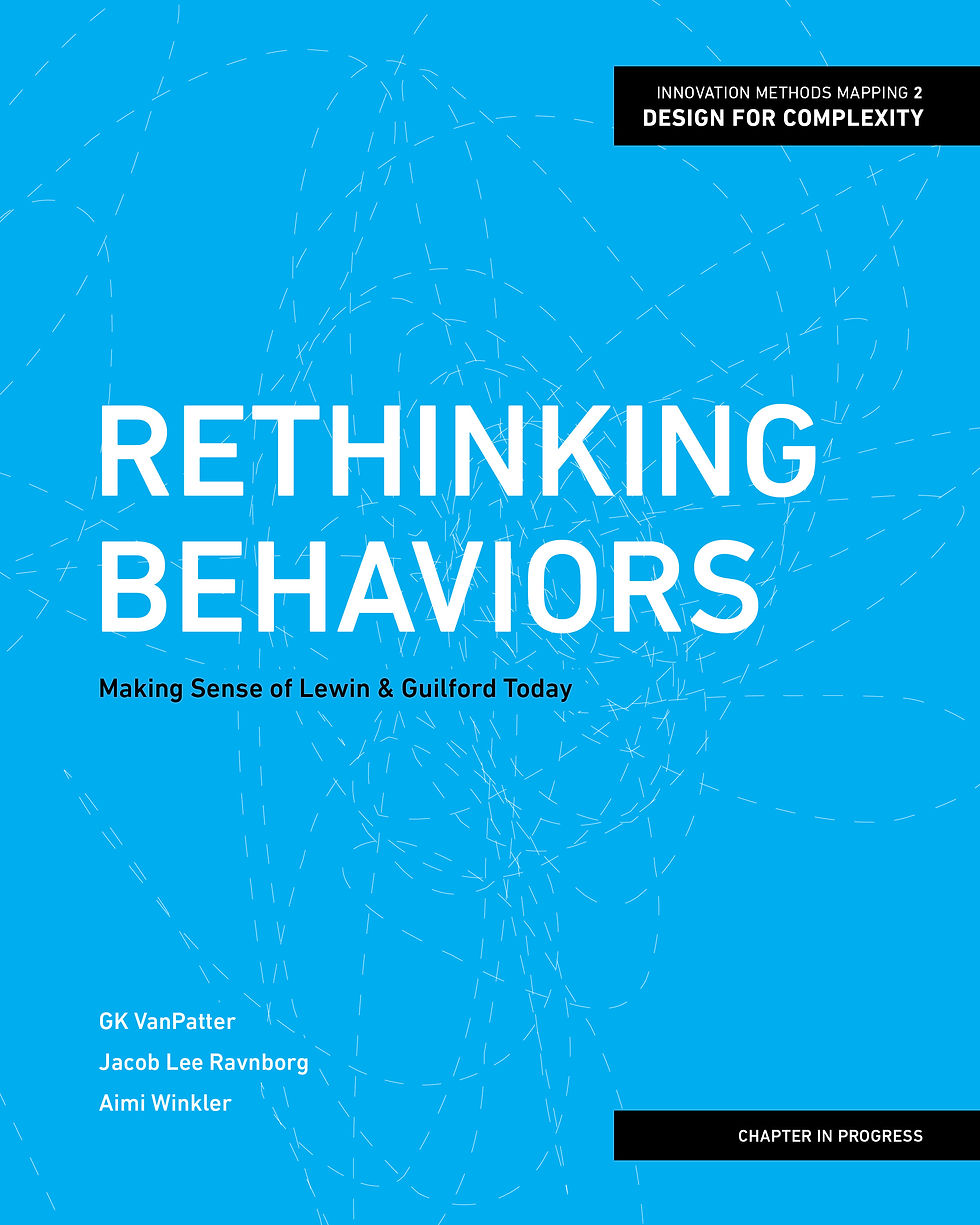What the Research Shows
- Admin
- May 31, 2022
- 3 min read

Welcome back Humantific readers. In this series we are doing a few short posts focused on some of the process related questions and themes that we see popping up on LinkedIn these days. Since we wrote a book on the subject of innovation process history, we are happy to share some of the insights generated as part of looking at 80+ years of process development accross multiple communities of practice.
Most folks doing process related R&D work want to be able to look, not at one process, or one communities processes but rather multiple processes, from multiple communties spanning multiple decades. In Innovation Methods Mapping we look at not the effectiveness of various processess but rather the book presents an examination of process design, process archtecture.
The question that we saw bubbling up was regarding hypothesis and the suggestion was whether or not it can be, should be inserted into design / design thinking as something new and shiny and appropriate. In general we see alot of repeating starting point ideas floating around in various LinkedIn threads, disconnected from any process history realizations or acknowledgement.
Last week we posted Ideation Clarity: What the Research Shows, for similar reasons. Process redesign explorations are often useful but can be not so effective if there is no historical R&D knowledge present, or if it is being deliberaty ignored.
To be brief: In the 80+ year history of innovation methods spanning 1926 to 2014 included in Innovation Methods Mapping book, the notion of hypothesis makes an early appearance but is largely absent.
From Wikepedia: "A hypothesis (plural hypotheses) is a proposed explanation for a phenomenon. For a hypothesis to be a scientific hypothesis, the scientific method requires that one can test it."
Before the CPS (Creative Problem Solving) community (among the oldest focused on process) had developed its own process language, it borrowed several notions from science and hypothesis was among them. The book shows that hypothesis as a step appeared in the 1953 version of CPS but was gone by 1967 and never returned.
As CPS matured in the 1950s and 60s via the hard work of Osborn, Parnes and numerous associates, it moved away from pseudo-scientific terms to create its own process language which cascaded forward into many other processes. This was an early indication that the subjects of applied creativity, innovation and that of science were different things, different processes. What that means is that the ten different addional versions of CPS that appeared in 1967, 1976, 1983, 1985, 1992, 2000, 2006 and 2011 did not contain hypothesis.
Anyone with copies of the early CPS materials can see the maturization of that language as it unfolded, was refined, accross the decades from 1940-50 to 2022. Our book gathers much of that material together and looks at the processes embedded there thru a framework applicable to all innovation process models.
Process models in the book include the Wallas Creativity Process which appearred in 1926 thru to the early Osborn-Parnes CPS models, thru to Appreciative Inquiry, Checkland’s Soft Systems Methodology, MG Taylor, Rittel, Fuller, Archer, Triz, Creative Education Foundation CPS, Engine, d-School, Puccio Murdock Mance CPS, Basadur, UK Double Diamond, Evenson-Dubberly, Humantific, IDEO, Frog, Google, and others.
Out of the 63 processes included in the book only one other process denotes hypothesis and that is the 2008 “Squiggle” appearing in the design community. None of the other 61 innovation processes in the book contain hypothesis among their phases or steps.
Of course the question of how to create an innovation process and language is a big one. Its no secret that today most leading consultancies have adopted hybrid processes, integrating the strongest aspects of the various communties knowledge which tends to be always growing.
We will be writing about this integration in a future post as we are often asked to suggest hybrid integration for various organizational contexts.
If you have an innovation process that contains hypothesis we would be interested to hear about it. Sometimes when I see it in LinedIn posts, especially in design related conversations and I ask why it is there, there is not a solid response other than they have seen it somewhere...:-)
Hope this is helpful.
Book 2
We happen to be working on Book 2 of Innovation Methods Mapping focused on Design for Complexity so this might be a good moment to mention that we are looking for contemporary process examples geared to complexities beyond product, service, experience creation. We hope to include 10-20 examples in Book 2.
Feel free to send us your Book 2 process suggestions.
In addition, we continue to gather historical innovation method examples, some of which we post in the Lab portion of the book 1 site.
Happy spring everyone!
Related:



Comments